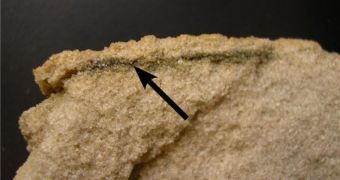The Drake Equation (DE) was compiled in the 1960s by now University of California in Santa Cruz (UCSC) Professor Emeritus of Astronomy and Astrophysics Dr. Frank Drake, in an attempt to quantify the number of worlds in the Milky Way that might sustain extraterrestrial civilizations. Even if its results are erroneous, it offers a relative framework for astronomers to work with. Now, scientists at the Open University are engaged in creating an equation that would essentially mathematically quantify a habitat’s potential for hosting life, AlphaGalileo reports.
“At present, there is no easy way of directly comparing the suitability of different environments as a habitat for life. The classical definition of a habitable environment is one that has the presence of a solvent, for example water, availability of the raw materials for life, clement conditions and some kind of energy source, so we tend to define a place as ‘habitable’ if it falls into the area where these criteria overlap on a Venn diagram,” OU expert Dr. Axel Hagermann explained.
“This is fine for specific instances, but it gives us no quantifiable way of comparing exactly how habitable one environment is in comparison with another, which I think is very important,” he added, before presenting the idea at the European Planetary Science Congress, held in Potsdam, Germany. Together with OU colleague Professor Charles Cockell, the expert wants to create the first mathematical description of all variables needed in an ecosystem, so that it can support some form of life as we know it.
“Electromagnetic radiation may seem simple to quantify in terms of wavelengths and joules, but there are many things to consider in terms of habitability. For instance, while visible and infrared wavelengths are important for life and processes such as photosynthesis, ultraviolet and X-rays are harmful. If you can imagine a planet with a thin atmosphere that lets through some of this harmful radiation, there must be a certain depth in the soil where the ‘bad’ radiation has been absorbed but the ‘good’ radiation can penetrate. We are looking to be able to define this optimal habitable region in a way that we can say that it is ‘as habitable’ or ‘less habitable’ than a desert in Morocco, for example,” Hagermann added.
The experts also acknowledged the fact that such a complex equation might never be developed, and, even if it were, it might never accurately predict all the factors that were involved in a planet or moon sustaining life. But they will try to fit in as many of these requisites as possible, in hopes of being able to help the astronomical community and policy makers in establishing the targets for future space missions.
“This kind of index has the potential to be an invaluable tool as we begin to understand more about the conditions needed for life to evolve and we find more locations in our Solar System and beyond that might be habitable,” Hagermann concluded.

 14 DAY TRIAL //
14 DAY TRIAL //